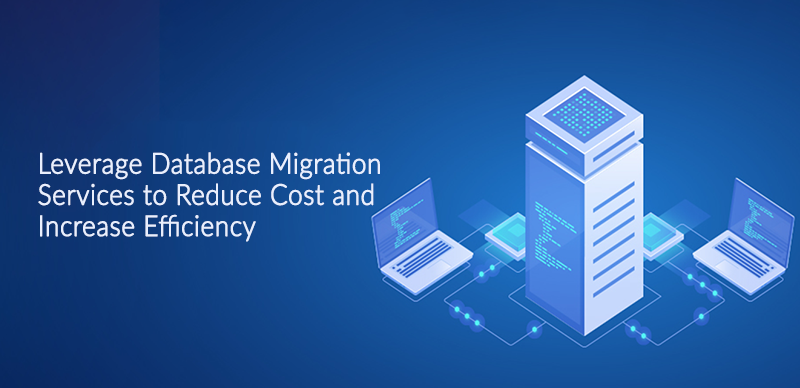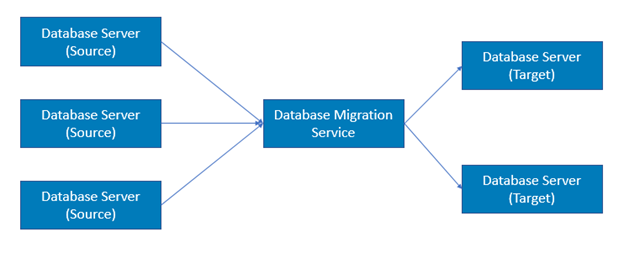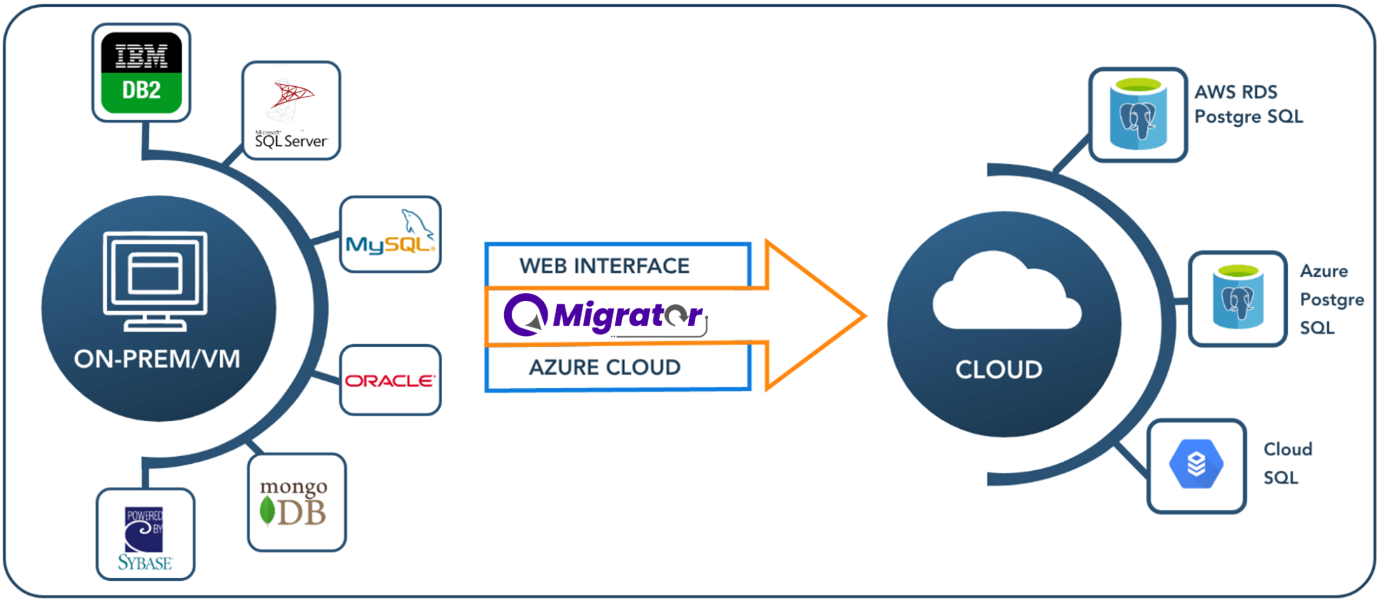Leverage Database Migration Services to Reduce Cost and Increase Efficiency

Database migration from commercial databases to open source has become a recent hot topic. It is a necessary process when upgrading or integrating storage hardware or adding data-intensive applications such as databases, data lakes and data warehouses.
According to Gartner, 50% of existing license-based databases will be converted to open-source databases by 2022 and 70% of new in-house applications will be developed open-source database platforms.
Many organizations today are migrating their data to open-source database platforms like MySQL and PostgreSQL to improve scalability, save operational costs, and increase their speed to the market.
This can be surprising if you still run your database on license-based platforms. Hurry Up! Partner with us to migrate your data to an open-source platform and reduce costs and improve productivity by 50%.
Before discussing how we can help with your data migration project, let me explain what actually the data migration is and how it helps transform businesses.
Database Migration
Database migration is the process of migrating data from one or more source databases to one or more target databases by using a data migration service. As companies focus on optimization and technological advancement, they are leveraging database migration services to migrate from their on-campus infrastructure to cloud-based storage and applications.
The figure below shows a simple illustration of Database Migration Services -

Database migration services is a complex, multiphase process that includes assessment, database schema conversion, script conversion, data migration, functional testing, performance tuning, and many other steps.
Data Migrations come in the following three types:
- Cloud Migration – This is the process of transferring applications, data, applications, and other business data resources from the on-premises data center to the cloud, or between clouds.
- Storage Migration – This is the process of migrating data from the old arrays to the modern system improving performance and reducing cost.
- Application Migration – Transfers application programs to a new and modern environment. It can migrate the entire application system from the on-Promise IT Center to the cloud or from one cloud to another.
What is the Motivation for Data Migration?
Here is a more comprehensive view on why you should really consider database migration.
Save Expenses—
Using an old database will cost you more as you will need to install other applications and systems to speed up the process. It is complex to scale your business with limited infrastructure, and it is not only expensive, but it can also take a long time.
Moving your database to a platform that offers your advantage more efficiently to save the infrastructure, manpower, and expertise needed for support is always the right option. Data migration gives you flexibility and improves speed, security, reliability, and disaster recovery planning for your system. This will help you to reduce service interruption.
Upgradation to New technology—
The common reason why companies prefer data migration is to move from older systems to new and advanced technologies. As we are living in a fast-paced and competitive world, organizations need to adapt to efficient storage technologies like PostgreSQL for more business efficiency.
Many businesses are today migrating from Oracle, My SQL, IBM DB2, MS SQL, Informix, EDB, Maria DB to PostgreSQL as it reduces the total cost of ownership up to 80%. This database system helps companies reach the next level of database technology, including Data Warehouse Analytics, Machine Learning, Cloud Services, IoT, and Data Science.
PostgreSQL is awarded as the "Database System of the Year" multiple time, and it has a strong focus on continuous development, reliability, cutting-edge technology, and user requirements.
Fixes Security Issues –
Cybersecurity has become one of the popular industries. Failure to upgrade the database regularly can leave vast gaps and still valuable information for hackers to arrive at. It then becomes one of the worst nightmares an organization can go through. Companies must have current security solutions to prevent data breaches that could bankrupt your business within minutes.
Reduces Redundancy –
Moving your data from one or more data resources to a single location can help you reduce redundant data and make it simple and hassle-free to access data from all segments of your firm.
How Quadrant Can Help with Data Migration?
At Quadrant Technologies, we offer customized process-driven and client-specific Database Migration solution. With our expertise and experience, our data migration team has conceptualized and developed an in-house data migration tool “QMigrator”.
QMigrator is a migration tool built-in Azure, with a web front end to make the entire migration process from client on-boarding to assessment to deployment seamless. Our state-of-art tool seamlessly migrates your data from widely used commercial and open-source databases such as Oracle Database, Microsoft SQL Server and AWS to PostgreSQL, MySQL, etc.

This highly secured QMigrator tool handles end to end migration activities including client on-boarding, assessment, and production deployment. Using QMigrator, our expert team will streamline the data migration process to improve quality, reduce infrastructure cost and minimize migration timeline by 50%, delivering on time with exceptional quality. We ensure a smooth transition, keeping the source operational, minimizing downtimes, and security at the center.
I hope you found this information useful. If you want to discuss your data migration project, please do not hesitate to contact us.
